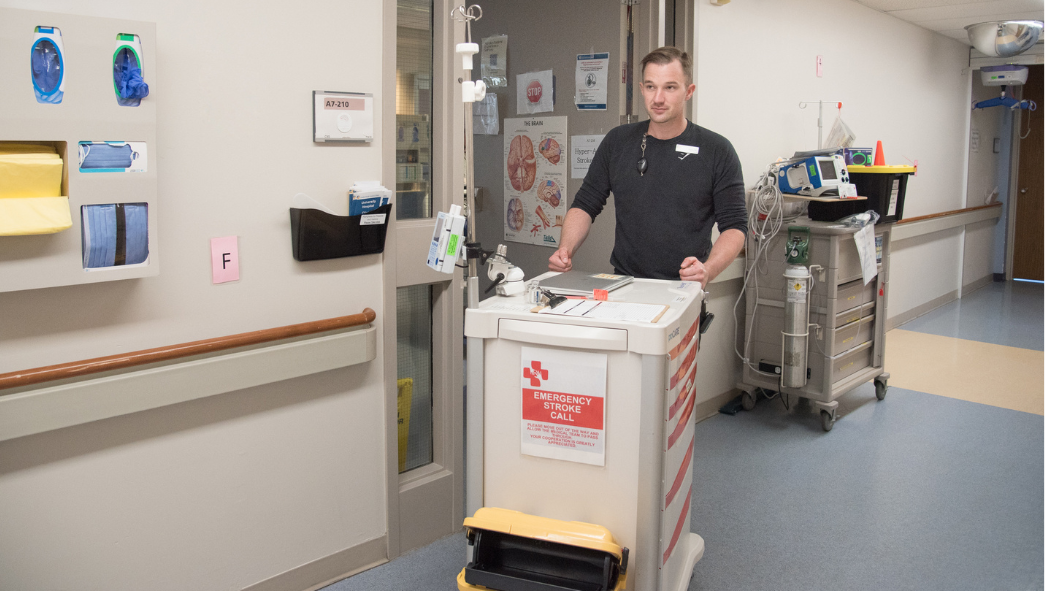
June is Stroke Awareness Month, a time dedicated to raising awareness about the signs of stroke and the critical importance of early intervention. At London Health Sciences Centre, the Clinical Neurological Sciences department has one of southwestern Ontario’s largest stroke units, located at University Hospital.
In 2014, the Heart and Stroke foundation launched the FAST campaign to help the public remember commons signs of a stroke and to act immediately.
Face – Face drooping
Arms – Arm weakness - can you raise both?
Speech – Speech difficulties - Is it slurred or jumbled?
Time to call 9-1-1 right away.
Recognizing these symptoms quickly can significantly improve stroke outcomes for patients. Prompt medical attention is crucial because the effectiveness of treatments, such as clot-busting medications, are highly time-dependent. “For every minute that someone is experiencing a blockage type of stroke, they lose 1.9 million neurons,” says Dr. Mandzia. “The quicker we treat someone, the better their outcomes and recovery.”
At LHSC, the stroke team is dedicated to enhancing patient care and recovery outcomes. Over the past year, they have significantly improved door-to-needle Time for thrombolysis treatment in acute stroke care.
What is Door-to-Needle Time?
Door-to-needle time (DTNT) refers to the time interval from when a patient with an acute ischemic stroke arrives at the hospital (door) to when they receive stroke treatment.
Reducing the DTNT is critical in stroke management as faster treatment is associated with better patient outcomes, reducing disability and improved recovery chances.
What is Thrombolysis?
Thrombolysis is a medical treatment designed to dissolve blood clots that have blocked blood vessels. The primary goal of thrombolysis is to quickly restore blood flow to affected areas, minimizing tissue damage and improving patient outcomes.
Why is this so important?
To be a candidate for thrombolysis, a patient must arrive within 4.5 hours of stroke symptom onset, so calling 911 immediately is crucial.
Previously, treatment time averaged 39 minutes, but following significant process improvements and the combined efforts of the emergency and stroke teams, most patients now receive treatment in under 30 minutes, with the average in May being 22 minutes.
These improvements reflect streamlined protocols and the strategic switch to a new medication for thrombolysis, enhancing treatment efficiency. Dr. Florendo-Cumbermack highlights, “This is a very cohesive team. The process transformed from separate department operations to now functioning like a completely unified team where everybody is prompting the process to get the patient the best and fastest care”.
The LHSC Stroke Unit has also integrated advanced technologies and treatments, such as rapid imaging and minimally invasive surgical techniques, to speed up diagnosis and intervention.
Dr. Mandzia emphasized her thanks to the CNS team and the quality specialists who have been instrumental in this process of evaluating the DTNT.
“If you are having signs and symptoms of a stroke, don’t ignore them, call 911 and you will be brought to the right hospital, evaluated by an expert team and you will have the best chance of recovery because we have a tight process that we do every day here at LHSC”.
